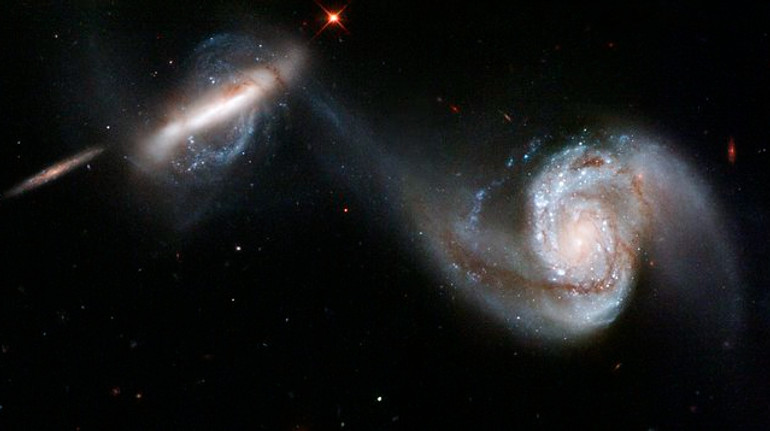Clashes of the Milky Way and Andromeda: New Predictions

An example of a merger of two galaxies
Photo: NASA, ESA, AND The HUBBLE HERITAGE TEAM
Over the last hundred years, astronomers have believed that our Galaxy Milky Way in the future should face his space « neighbor » – Andromeda. Now, scientists have found that the likelihood of such an event is not as inevitable as they assumed earlier.
This is stated in a study that Posted in Nature Astronomy, writes CNN.
Since 1912, astronomers assumed that in about 4.5 billion years, the Milky Way would face his largest « neighbor » – Andromeda. This was evidenced by the fact that these vision and dust systems are moving towards each other, 100 kilometers per second are oriented.
However, the local group – part of the universe, which includes the Milky Way – includes dozens of other galaxies. Scientists have decided to analyze whether they could influence the great clash, which was considered inevitable.
For this purpose, scientists took into account the gravitational attraction of galaxies of the local group and conducted 100 thousand simulations. They found that 50% of the Milky Way would face Andromeda over the next 10 billion years. At the same time, the chances of this event in the next four to five billion years are about 2%.
« We still thought it is a fate that awaits our Milky Way Galaxy. Now we know that there is a very high probability to avoid this »– said the study co -author Carlos Frank.
Why may a great collision not happen?
Scientists have found that the Great Magellan Cloud (VMH) is much smaller than the Milky Way called the Great Magellana Cloud (VMH) perpendicular to Andromeda gravitational attraction. This gives him sufficient strength to change the movement of our galaxy with cosmos and reduce the likelihood of a great collision with Andromeda.
« VMH pulls the Milky Way from the orbital plane and removes it from Andromeda. It does not mean rescue from merger, but makes it a little less likely », « – explained the leading author of the study Till Saval.
Scientists added that if the Milky Way is on the path of Andromeda, it will cause a powerful surge in star formation. Later, the period of intense radiation will come due to the explosion of young stars and the activity of a new supermassive black hole, which should eventually stop the formation of new luminaries.
« In a few billion years, any traces of the former Milky Way and Andromeda will disappear and the rest will be a faceless elliptical galaxy »”Till Savala added.
The authors of the work point out that there are many unknown factors that complicate the forecasting of the final fate of our galaxy. In addition, modeling showed that the Milky Way has a greater chance of faced with a large Magellan cloud than Andromeda.
Scientists also say that the greater threat to the existence of the Earth is the sun, which will start to die in five billion years. Then it will expand and absorb Mercury, Venus and potentially our planet.
In the end, astronomers believe that the future of the Milky Way remains an « open » question.
Earlier, scientists accidentally came across our galaxy on A mysterious objectwhich distinguishes two types of radiation at once. Such activity is not characteristic of any famous cosmic body.








